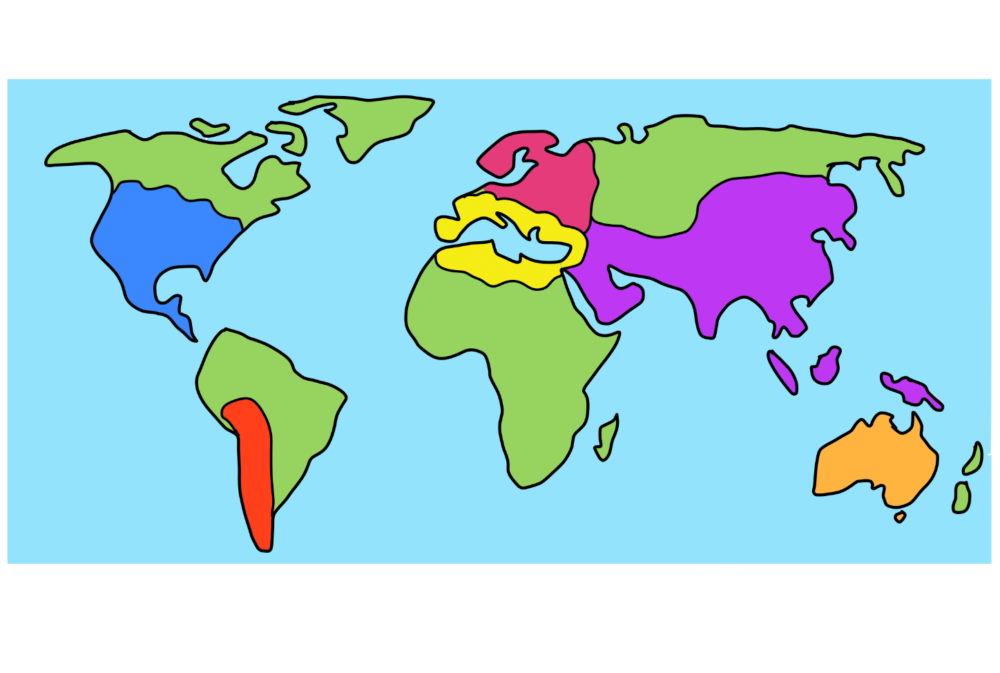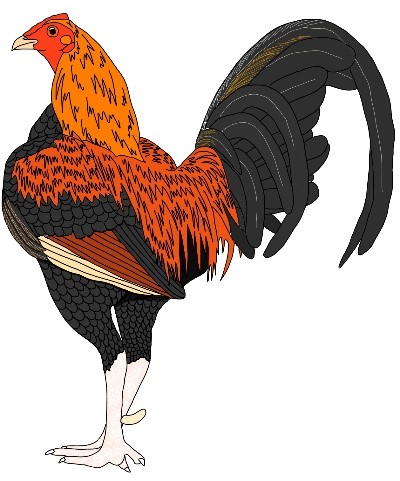Chickens: Humankind’s Best Friend
Did you know chickens are one of the closest living relatives of the tyrannosaurus rex? Chickens have made their mark on our planet, populating every continent except Antarctica and being a valuable resource for humankind over the years. But how did it all start? And where did your chicken breed originate from? Find out below!

The Humble Jungle Fowl
Genetic information has proven that all chickens have descended from different types of Jungle Fowl found throughout south-east Asian jungles. One original descendant still alive today is the Red Jungle Fowl, which inhabit forests edges where they can search for food close to the protection of trees. Tree coverage helps them evade aerial and ground-dwelling predators and these same instincts can been seen within our domesticated species today. Omnivores at heart, these birds eat everything from vegetation to small vertebrae like lizards and are commonly found to eat early morning and late afternoon, the safest times of the day. Domestication occurred over 5000 years ago and has led to the successful survival of chickens and humans alike, yet it is still unclear whether domestication happened at a similar time in different places throughout the globe. Anyway, the reduced flying capabilities, rich eggs, quick growth rates and reproduction endeared it to be one of humankind’s greatest assets, and also allowed the humble chicken to thrive throughout history.

Chickens from Around the World
With selective breeding, distinct pockets of chicken genetics have been developed, and many of the breeds within these areas carry similar traits and features. Here are the main categories:
European

The unofficial leader of poultry breed creation, Europe has smaller sub-pockets of genetics that were cultivated in different countries. From the dark egg laying breeds of the Netherlands and France, to the exquisite patterns of German breeds, to the fine table birds of England, the chicken diversity here is unparalleled.
Breeds: Barnevelder, Welsummer, Belgium Bantams, Campine, Cornish/Indian Game, Dorking, Faverolles, Houdan, La Fleche, Maran, Hamburg, Lakenvelder, Phoenix, Vorwerk, Polish, Modern Game, Orpington, Old English Game (pictured), Rosecomb, Sebright, Sussex, Naked neck
Mediterranean 
These birds originate from the southern parts of Europe and northern Africa, and reflect their hot climate through their leanness, and are also known to be powerful flyers, lightweight and excellent egg layers. As the comb is used to help reduce heat in birds (as they do not sweat), the most distinctive feature is large wattles and a large flopping comb.
Breeds: Fayoumi (pictured), Ancona, Leghorn, Sicilian Buttercup, Andalusian, Minorca, Spanish
Asian 
Everything from stunning oriental breeds to the best gamebirds. Asia has many unique genetic chicken anomalies, from extra long tails and short legs to silkie and frizzle feathering mutations. As chickens were historically used for cockfighting (a practice banned in Australia), this continent is home to some of the most impressive game specimens on the planet, known for their tight body feathering, powerful wings and spurs. Although used for fighting, game fowl can make fantastic pets, known for their docility and beautiful natures (read more about game fowl here____).
Breeds: Japanese Bantam (pictured), Shamo, Yokohama, Ayum Cemani, Dutch, Malay, Sumatra, Cochin, Frizzle, Croad Langshan, Pekin Bantam, Silkie, Sultan, Serama
North American
These fowl mean business, think table birds and dual-purpose breeds. It’s not all about commercial traits though, with superb lacing and leg feathering also making this chicken population unique.
Breeds: New Hampshire, Plymouth Rock, Rhode Island Red (pictured), Rhode Island White, Wyandotte, Brahma
South American 
Although only one well known chicken breed originates from here, its eggs are highly sought after as they are blue green in colour. The chicken itself appears to be a mix of gamebird and softfeather breeds.
Breed: Araucana (pictured)
Australian
One of the newest chicken populations, these breeds take inspiration from European and Asian poultry bloodlines, most likely due to the broad range of climates present in our country.
Breeds: Australorp (pictured), Pit Game, Australian Game
A New Challenge for Chicken Diversity
Of course, most breeds can now be found throughout the world. And with the commercialisation of poultry necessary to keep up with demand for chicken products, there seems to be less of a need for such a diverse range of poultry. BUT, if current climatic situations have shown us anything, we need to be prepared for anything, including potential risks to commercial poultry. The genetic pool of diversity that exists through our chicken breeds may hold the key to their future survival if commercial breeds become susceptible to future diseases or environmental conditions. Also, some poultry breeds are also 100-200 years old, and it would be a shame to see these breeds become extinct.
What can you do to help?
- Support breeders by purchasing hens for your backyard – get in touch with your local poultry club
- Become a breeder yourself – choose a breed, find a mentor and get some quality stock
- Join the Rare Breeds Trust of Australia – this doesn’t just apply for poultry, but encompasses sheep, pigs, goats, horses, cattle, pigs and donkeys! https://rarebreedstrust.com.au/
-Breanna Carr, 5th Year Veterinary Science Student.

